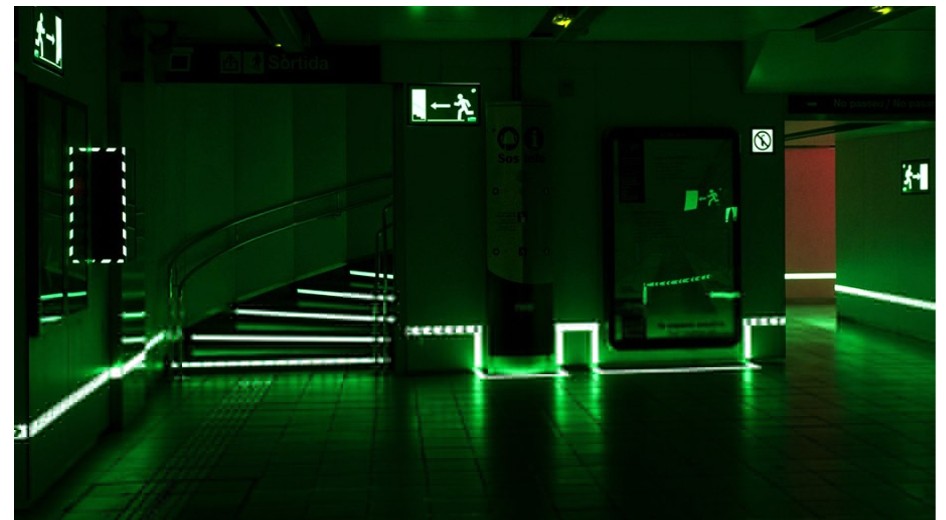Emergency lighting technology in London is poised for significant advancements in the coming years, driven by innovation and the city’s commitment to safety and sustainability. As urban environments evolve, so too does the need for more efficient, reliable, and technologically advanced emergency lighting solutions, as reflected in the issuance of an Emergency Light Test Certificate. Let’s explore what the future holds for emergency lighting technology in London and how these developments will shape safety standards and infrastructure.
Embracing LED Technology for Efficiency
LED (Light Emitting Diode) technology has revolutionized emergency lighting systems with its energy efficiency, longevity, and versatility. In London, the shift towards LED-based emergency lighting solutions is already underway, driven by regulations promoting sustainability and reducing carbon footprints. LED lights consume less energy than traditional lighting sources, contributing to cost savings and environmental sustainability while ensuring reliable illumination during emergencies.
Integration with Smart Building Systems
The future of emergency lighting in London is increasingly intertwined with smart building technologies. These systems leverage interconnected sensors, data analytics, and automated controls to enhance the functionality and responsiveness of emergency lighting. Smart emergency lighting can detect occupancy, monitor lighting conditions, and automatically adjust illumination levels based on real-time needs, ensuring optimal visibility and safety in varying scenarios.
Enhanced Connectivity and Remote Monitoring
Advancements in connectivity are transforming emergency lighting systems into interconnected networks that can be monitored and managed remotely. In London, buildings equipped with IoT (Internet of Things) enabled emergency lighting systems allow facility managers to monitor the status, performance, and battery life of lights from a centralized platform. This capability facilitates proactive maintenance, reduces downtime, and enhances overall system reliability.
Improved Battery Technologies
Battery reliability is crucial for the effectiveness of emergency lighting systems. Future advancements in battery technologies, such as lithium-ion batteries, offer longer lifespans, faster charging capabilities, and enhanced energy storage capacities. These improvements ensure that emergency lights can maintain illumination for extended durations during power outages or emergencies, providing continuous safety support in critical situations.
Adaptive and Human-Centric Lighting Designs
The future of emergency lighting in London is moving towards adaptive and human-centric designs that prioritize comfort, visibility, and well-being. These designs consider factors such as color temperature, glare reduction, and lighting distribution to create environments that are both visually appealing and conducive to safety during emergencies. Human-centric emergency lighting enhances occupant comfort and orientation, reducing stress and improving response times in crisis situations.
Integration with Renewable Energy Sources
London’s commitment to sustainability is driving the integration of emergency lighting systems with renewable energy sources, such as solar power and kinetic energy harvesting. By harnessing renewable energy, buildings can reduce their reliance on traditional power grids during emergencies, ensuring continuous illumination while minimizing environmental impact. These initiatives align with London’s goals of achieving carbon neutrality and promoting resilience in urban infrastructure.
Innovations in Design and Aesthetics
In addition to functionality, the future of emergency lighting in London also emphasizes design aesthetics and integration into architectural spaces. Manufacturers are focusing on creating sleek, compact, and aesthetically pleasing emergency lighting fixtures that seamlessly blend with modern interior designs. These innovations not only enhance the visual appeal of emergency lighting but also promote their acceptance as integral components of contemporary urban environments.
Research and Development Initiatives
Ongoing research and development initiatives in emergency lighting technology are driving continuous innovation in London. Collaborations between academia, industry, and government agencies are exploring new materials, advanced lighting controls, and predictive maintenance techniques to further enhance the performance and reliability of emergency lighting systems. These efforts aim to anticipate future safety challenges and deliver solutions that meet evolving regulatory requirements and user expectations.
Conclusion
The future of emergency lighting technology in London is bright with promise, characterized by advancements in LED efficiency, smart building integration, enhanced connectivity, improved battery technologies, human-centric designs, renewable energy integration, aesthetic innovations, and ongoing research initiatives. As the city continues to grow and evolve, these technological advancements will play a crucial role in ensuring the safety, sustainability, and resilience of London’s urban infrastructure, supported by the expertise of EICR Cert. By embracing innovation and harnessing the power of advanced emergency lighting systems, London reaffirms its commitment to creating safer, smarter, and more livable spaces for all its residents and visitors, If you want to stay updated with posts like this, please follow us on DigiFanzine.
